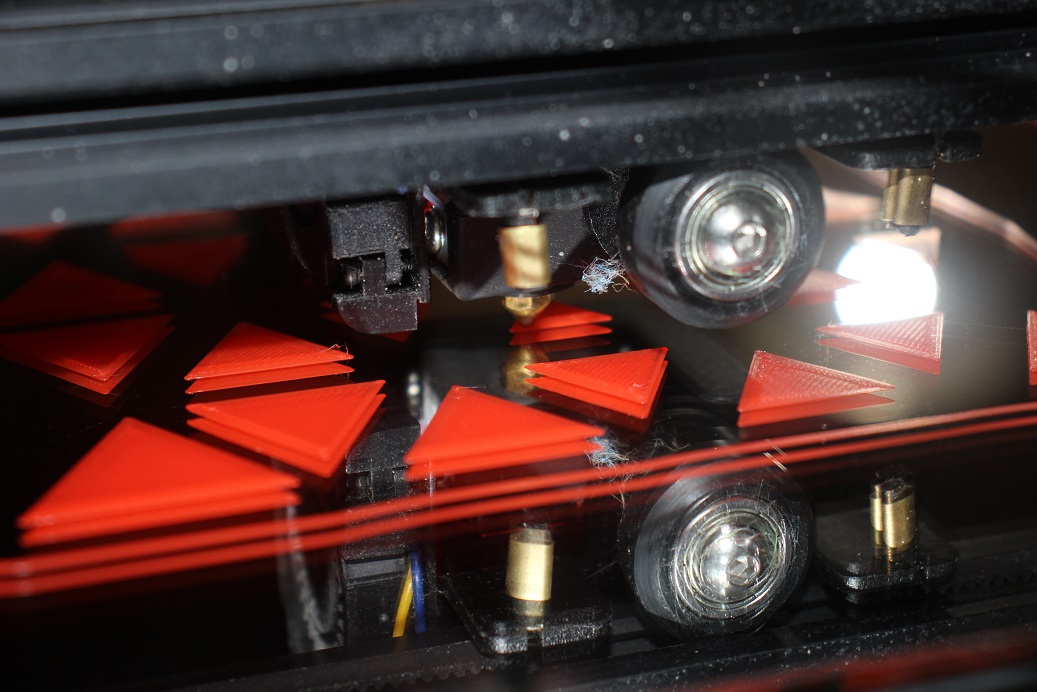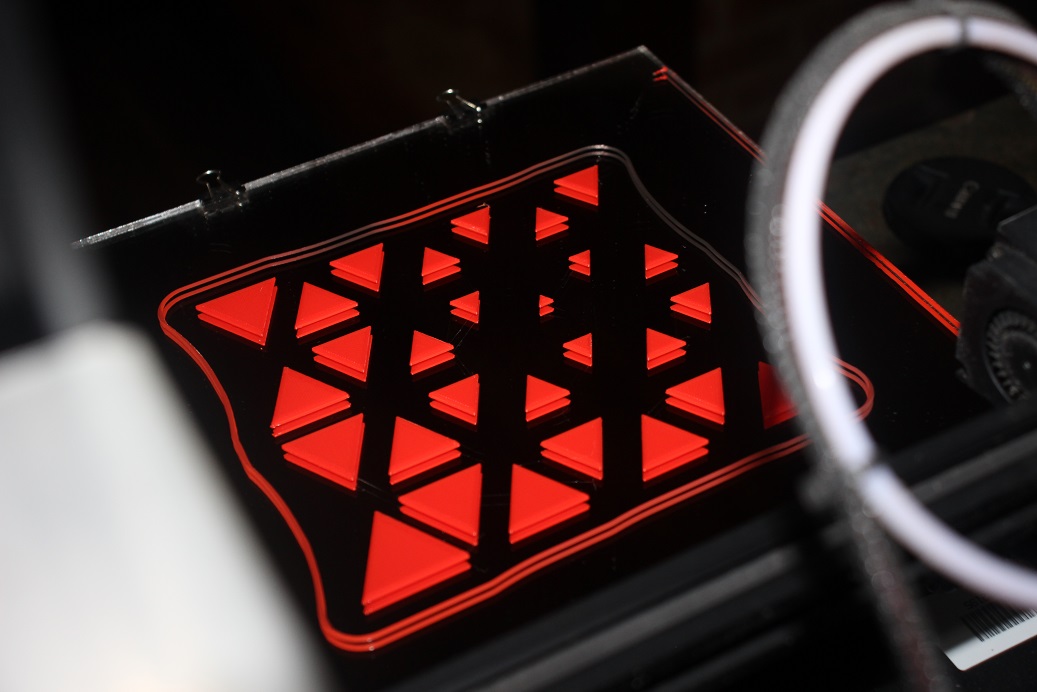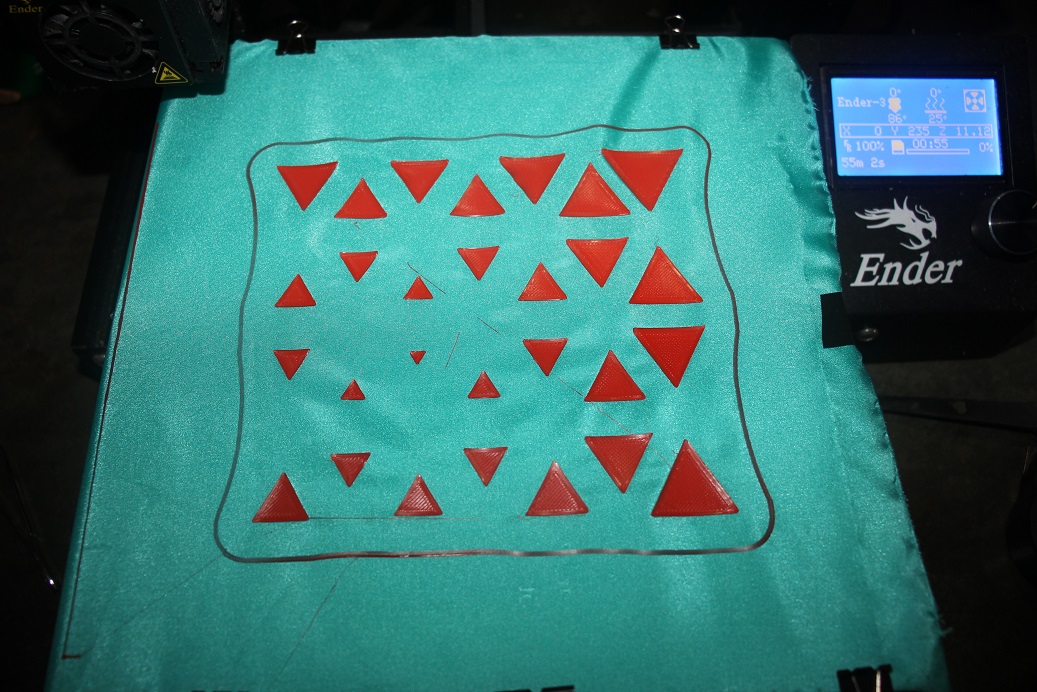7. Computational Couture¶
Inspiration¶
Danit Peleg¶
Behnaz Farahi¶
Iris van Herpen¶
Neri Oxman¶
Computational Design¶
Parametric modeling¶
Parametric modelling (or parametric design) is the creation of a digital model based on a series of pre-programmed rules or algorithms known as 'parameters'. That is, the model, or elements of it are generated automatically by internal logic arguments rather than by being manually manipulated.
Grasshopper is a visual programming interface for the 3D modeling program Rhinoceros. Rhino uses non-uniform rational B-splines (NURBS) to precisely, mathematically model geometry. With visual programming, you can algorithmically generate geometry by composing diagrams that link data to functions. An algorithmic approach enables designers to create complex forms and rapidly generate alternative designs.
- I followed the tutorial to script a parametric triangle pattern with attraction points.*
-
With the generated pattern I extruded the surface with 1mm towards the Z axis.* With the pattern selected I extruded the surface 2mm towards the Z axis. Then I added the Cap Holes command to create a solid extruded from a surface.
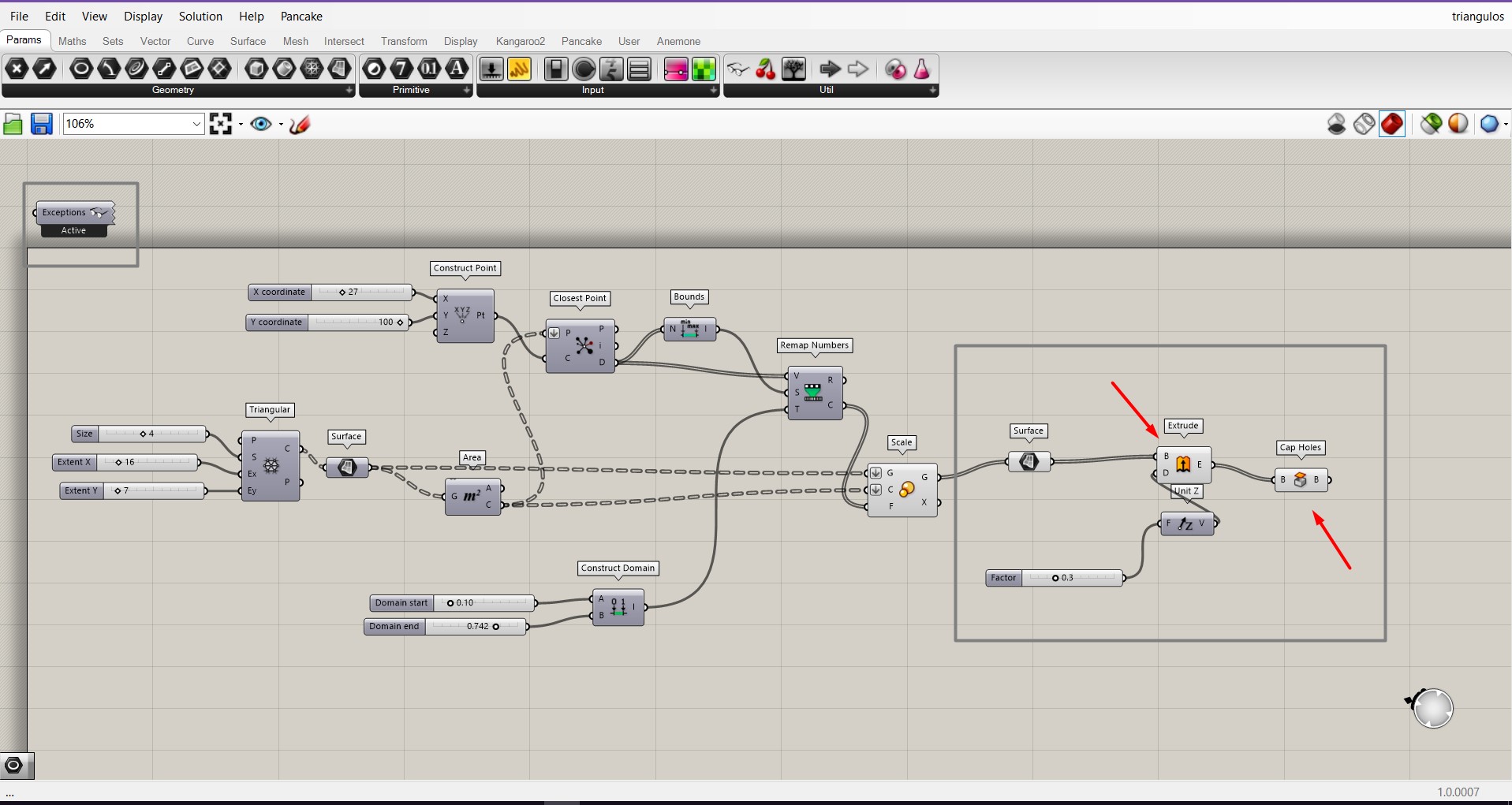
-
To work with (select, edit, transform, etc.) geometry in Rhino that was created in Grasshopper, you must “cook” it. Baking instantiates new geometry in the Rhino document based on the current state of the Grasshopper chart. It will no longer be responsive to changes in its definition.*
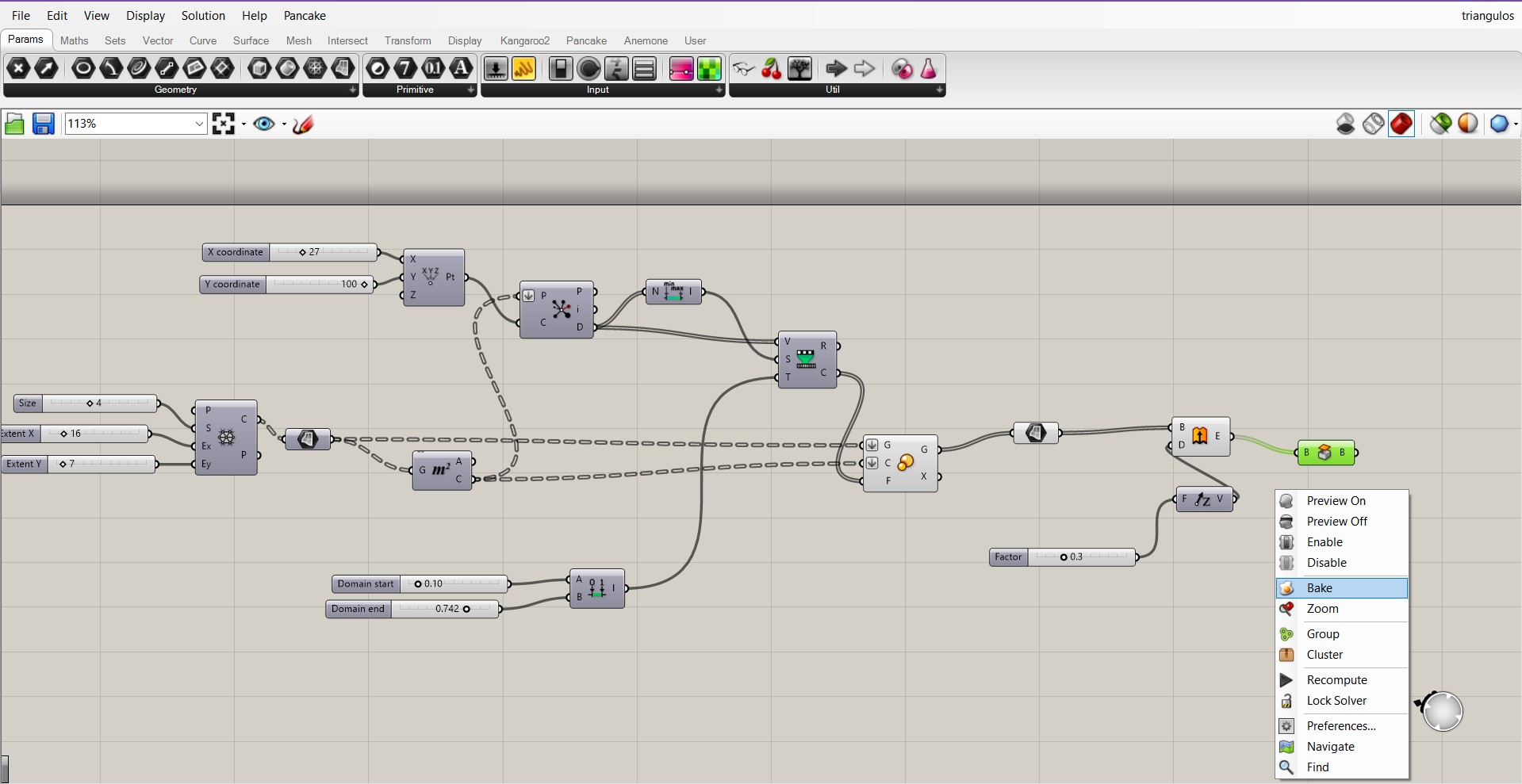
-
If you don't bake it is very likely that you will find this message. This happens because grasshoper generates a virtual project in rhino. If you try to save it without the bake there will be no surface. Believe me: I fried it for days to find that it didn't generate the surface for that reason. *
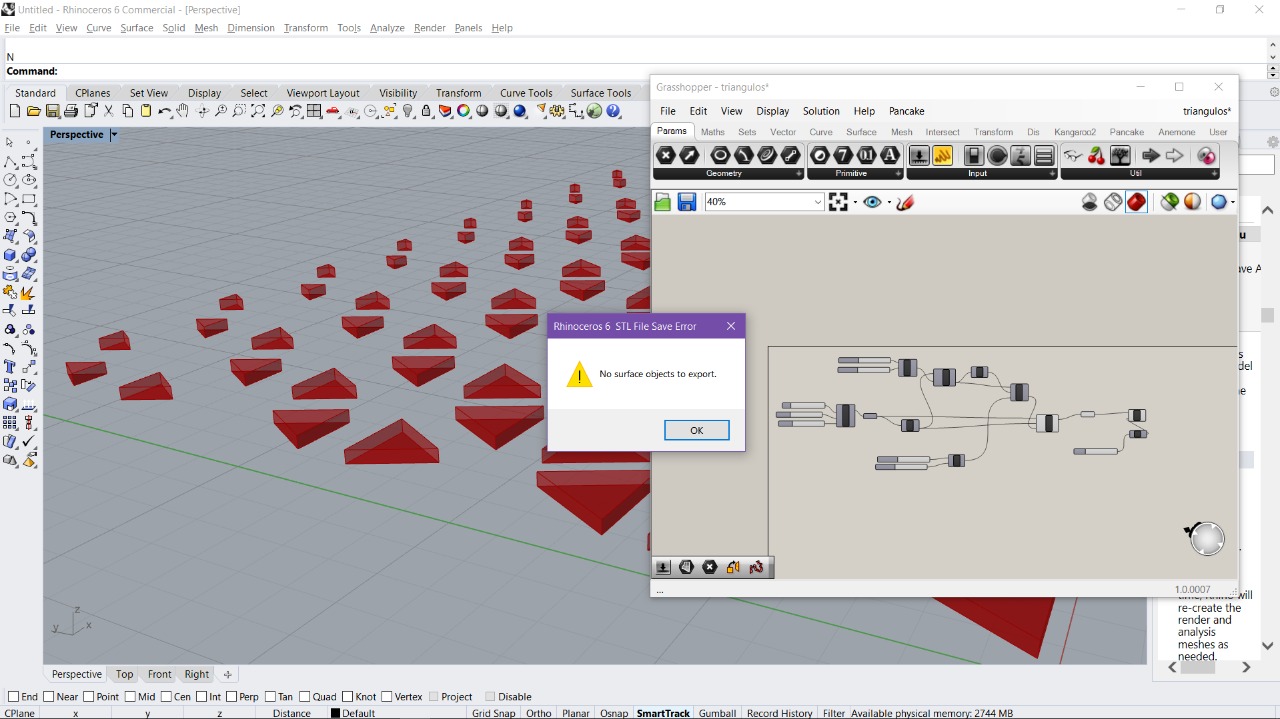
Digital Fabrication¶
Slicing¶
3D printers work with GCODE files, which are interpreted by them to create layers of material, which will be stacked and generate the printed 3D model. With the modeling ready, the next step is to send it to a slicing software that will analyze the file to be printed and can configure wall patterns, filling, layer height, temperature, support, speed, among other settings. I used the cura software with the following settings:

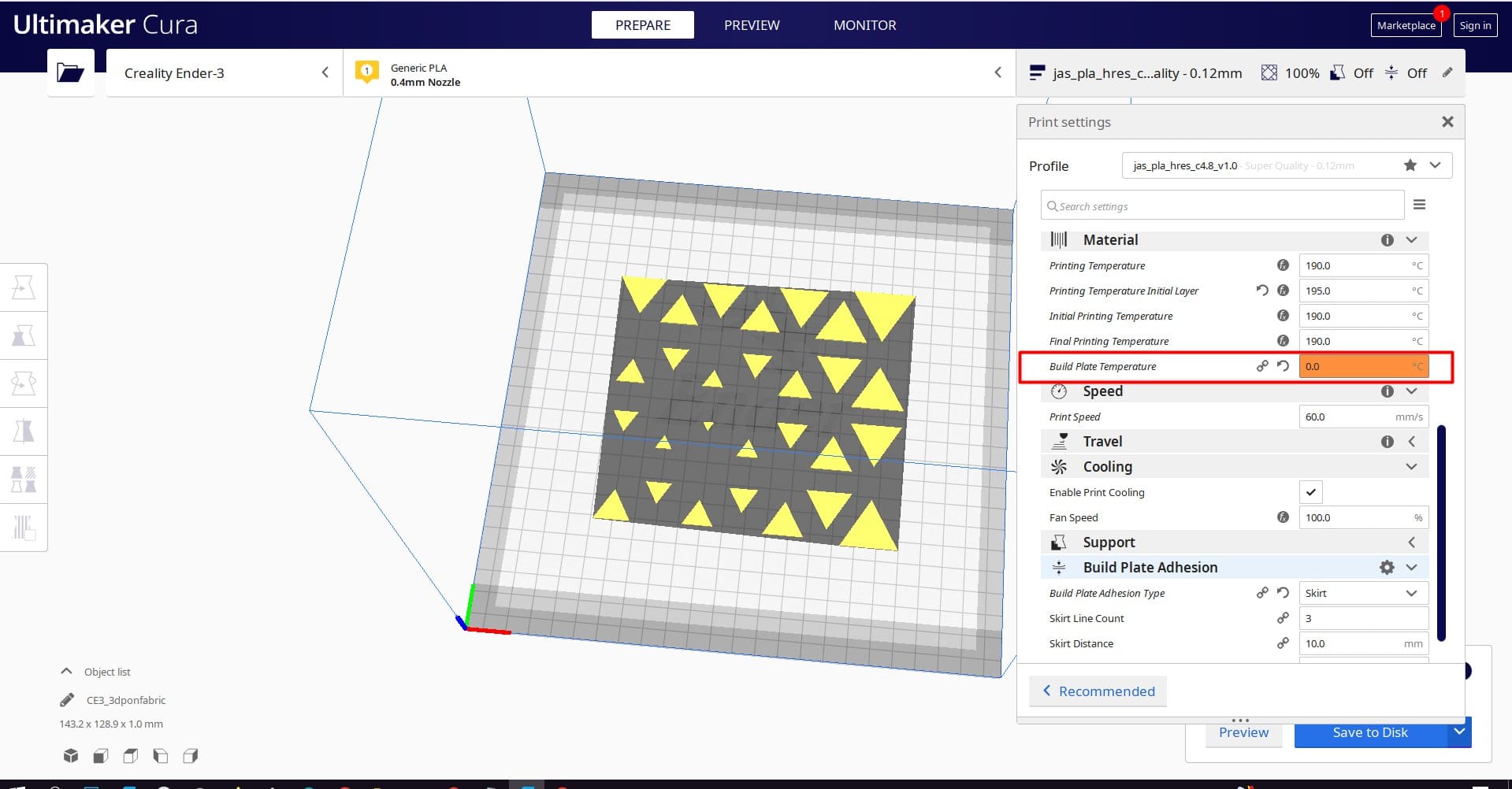
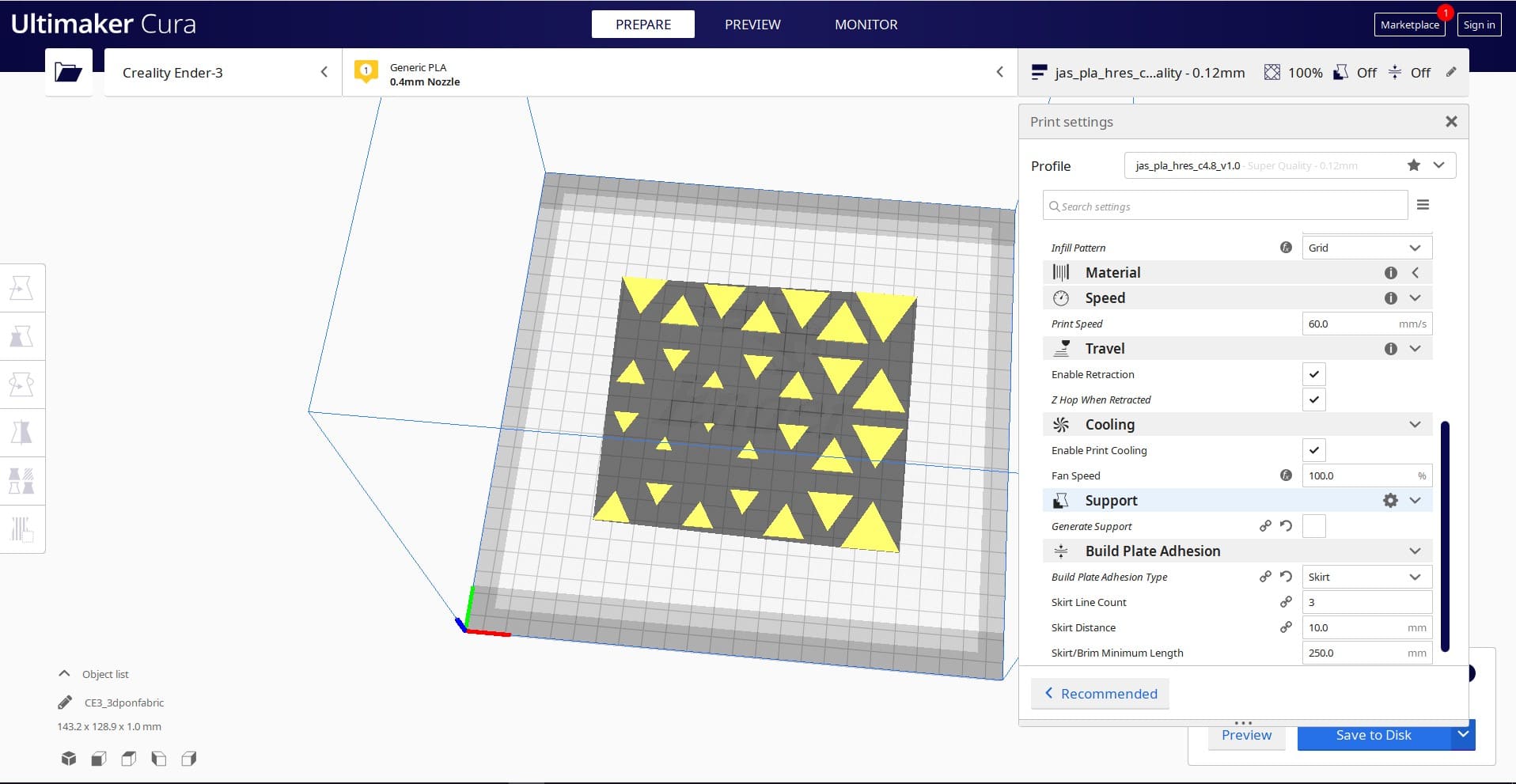
How a printer works¶
There are some types of 3D printing. I used the FDM type (fused deposition modeling). FDM prints parts using thermoplastic filament, which is basically a strand of material capable of being melted, selectively deposited and cooled. Parts are built by adding layers on top of each other.
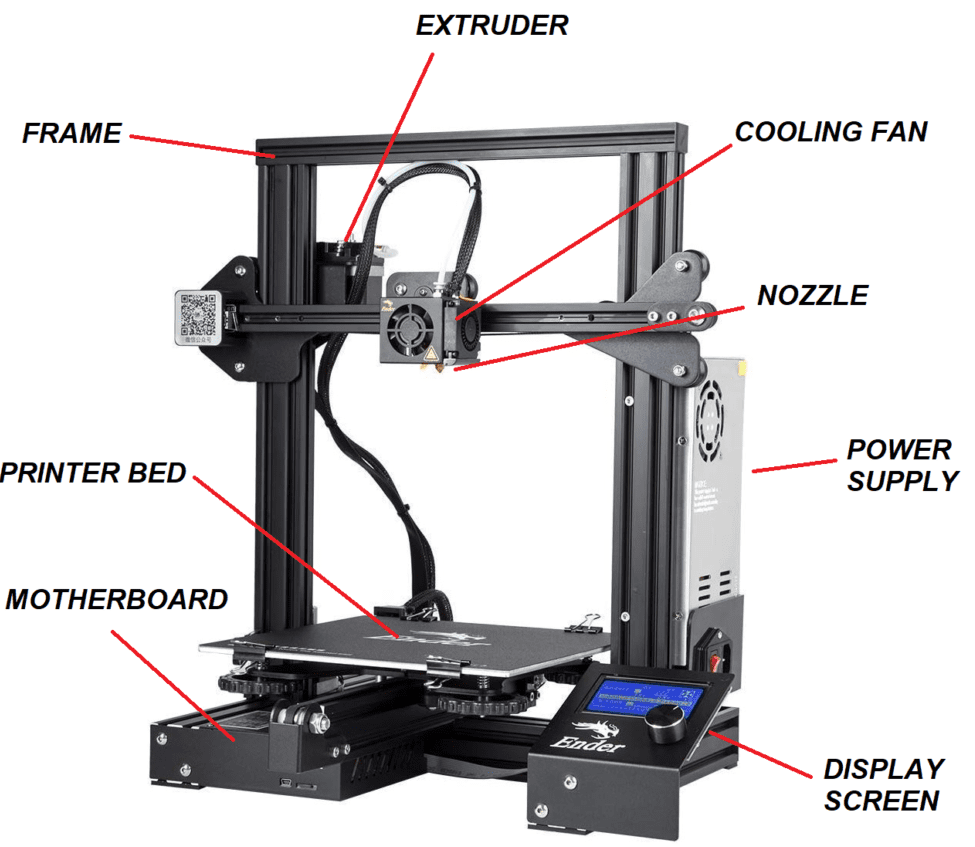 * I uploaded the .gcode file to the ender 3D printer removable card. Through the display I digitally accessed the card and selected the file for printing. Soon after the nozzle starts to heat up and when the temperature is needed to melt the filament, the extruder pulls the filament to the hot end and prepares for the deposition of material (in my case, Esun's PLA+).*
* I uploaded the .gcode file to the ender 3D printer removable card. Through the display I digitally accessed the card and selected the file for printing. Soon after the nozzle starts to heat up and when the temperature is needed to melt the filament, the extruder pulls the filament to the hot end and prepares for the deposition of material (in my case, Esun's PLA+).*
-
The print head (HotEnd) descends to the build platform and begins to deposit the molten filament, which cools and hardens shortly after leaving the nozzle, thanks to the part cooling fan(s). Filament is deposited one layer at a time, and after a layer is completed, the printhead moves up a little on the Z axis, and the process is repeated until the part is complete.*
-
I printed a version without the fabric on the table before the final version. *
-
Then I pinned the Oxford fabric under the print bed. I used a paper clip to fasten the parts horizontally and on the sides I fixed it with electrical tape. *
Files¶
Research¶
All Important 3D Printing Terms
